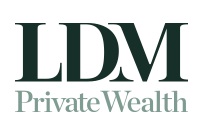In the space of a year – and 12 official interest rate rises – plenty of positively or neutrally geared investment properties have slipped into negative territory. After a significant 4% jump in the cash rate, savvy investors are now rethinking their medium to long term strategies.
While some property investors actively choose a negative gearing path, others have only recently found themselves navigating the oft-talked about mortgage method due to the fast-paced interest rate climate. There are tax-related perks that come with negative gearing, but the strategy doesn’t necessarily make sense for everyone. To work out if negative gearing is right for you, it might be time to give your property investment plan a ‘health check’.
Advantages of negative gearing
Put simply, negatively gearing your property investment means spending more on your mortgage interest payments and expenses than you’re getting in rental payments. In this case you’re effectively not earning an income from the property, but it does mean you can write off these losses at tax time. Although the investment property is costing you (rather than providing income), the negative gearing pay day hopefully comes in the form of capital growth.
Disadvantages of negative gearing
While some investors swear by the strategy, negative gearing does come with downsides. You’ll be making an ongoing loss and won’t generate a passive income to help pay for the property’s holding costs. Another drawback is the potential for a capital loss. Investors get into real estate to make money, but there are no guarantees.
What is positive gearing?
On the flip side of negative gearing, positive gearing takes the opposite approach, whereby the income you earn from your investment property is higher than your expenses. This tactic is ideal for investors looking for consistent returns and a passive income. And if the property increases in value there will be capital gains on top of your rental income when you come to sell. You will pay tax on your rental income and with rising rates, it can be more challenging to find suitable properties which fit the strategy.
Neutral gearing explained
If your investment property costs you nothing, but also earns you nothing, then it is neutrally geared. It’s a rare approach because it’s difficult to perfectly align both the expenses and earnings but can work well for anyone investing through a self-managed super as it won’t eat into the fund’s wealth.
What to consider when negative gearing
It’s important to cover all your bases when working out whether negative gearing is the right strategy for your personal circumstances and the property in question. Prepare yourself by asking;
-
Can I realistically pay for the property while also losing money on it?
-
If interest rates continue to rise, can I still afford this strategy?
-
Is there scope to increase the rent to meet the mortgage demands?
-
Is the property going to appeal to a high number of potential renters so it never sits empty?
-
What happens if I can’t find a quality tenant, or even one at all?
-
Has the home got good capital growth potential?
-
When, if ever, will the property be positively geared?
-
Will the potential tax benefit, coupled with the profit I hope to make upon its sale, outweigh the negative gearing loses?
Is negative gearing still worth it?
As the cost of living – and the price of holding a mortgage – continues to increase, negative gearing will eat more and more into your monthly expenses. While it can be a highly effective strategy to reduce your tax bill and unlock capital gains, there are a lot of other things to consider. If your household budget is already tight in the current climate, then perhaps this isn’t a path for you. However, if you have crunched the numbers and are confident you can absorb the extra costs then negative gearing might just be the right fit.
Ultimately, you’ll need to consider your own financial circumstances and speak to us to find a loan that suits your ideal strategy.
Important: This provides general information and hasn’t taken your circumstances into account. It’s important to consider your particular circumstances before deciding what’s right for you. Although the information is from sources considered reliable, we do not guarantee that it is accurate or complete. You should not rely upon it and should seek qualified advice before making any investment decision. Except where liability under any statute cannot be excluded, we do not accept any liability (whether under contract, tort or otherwise) for any resulting loss or damage of the reader or any other person.
Any information provided by the author detailed above is separate and external to our business and our Licensee. Neither our business nor our Licensee takes any responsibility for any action or any service provided by the author. Any links have been provided with permission for information purposes only and will take you to external websites, which are not connected to our company in any way. Note: Our company does not endorse and is not responsible for the accuracy of the contents/information contained within the linked site(s) accessible from this page.



